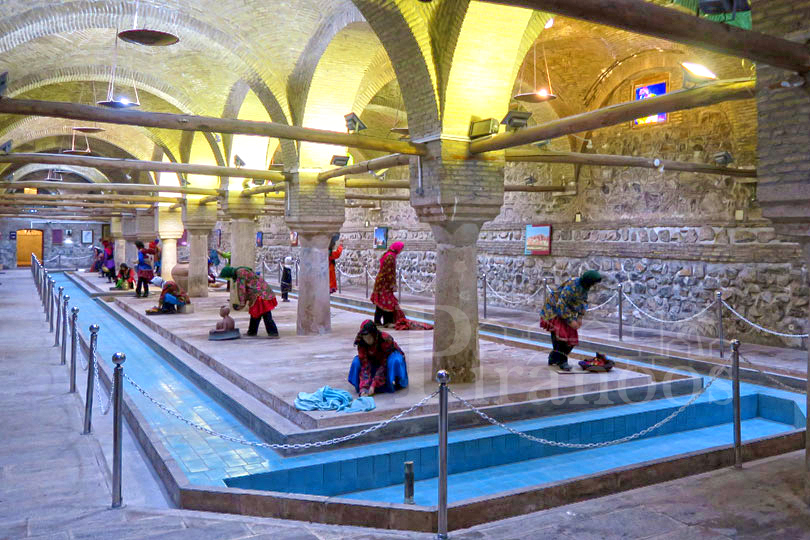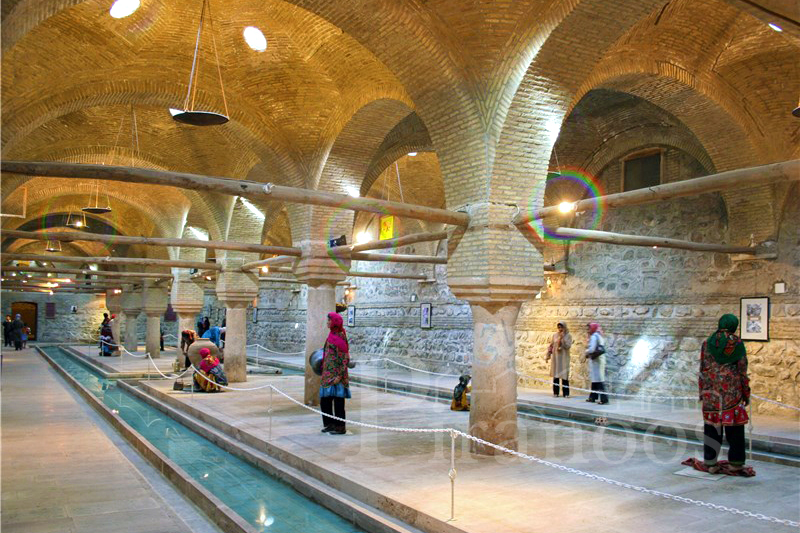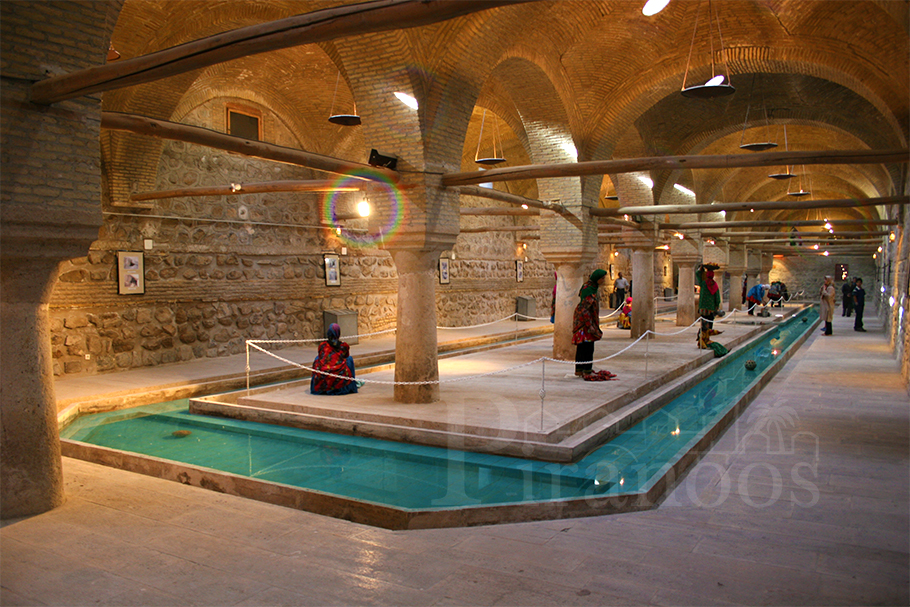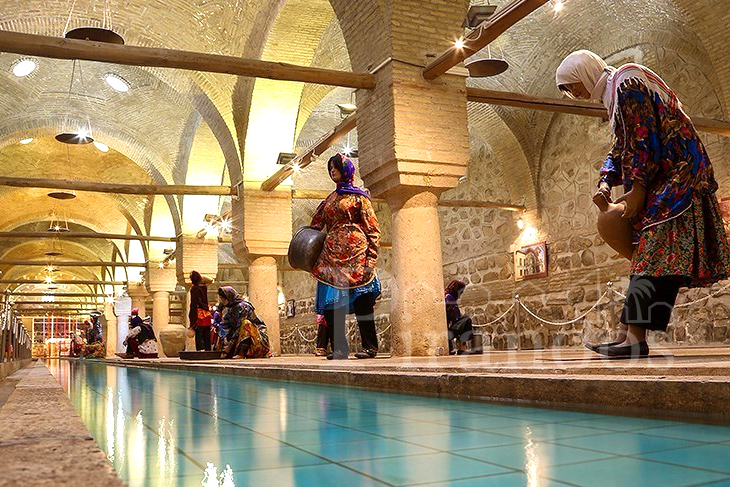Rakhtshooy Khaneh means the washing house or the laundry house. The Rakhtshooy Khaneh Edifice or Rakhtshooy Khaneh historic complex was built in a crowded residential area in the heart of Zanjan’s historical texture. People in the city used to wash their clothes there.

The Rakhtshooy Khaneh Edifice is one of the most spectacular monuments of Zanjan, which is unique in Iran. Built in 1922 by the mayor of Zanjan Ali Akbar Khan Towfiqi, so that Zanjani women could do their daily washing work safely without the harsh heat or the bitter cold of that time. The covered building was built by the famous architects Mashhad Akbar and Mashhadi Ismail in late Qajar and early Pahlavi era. The Rakhtshooy Khaneh was built in one of the busiest neighborhoods back then in Zanjan and near the big bazaar to make it accessible to everyone.
The Rakhtshooy Khaneh Edifice is currently the most important museum in the Zanjan province, and in which all kinds of local clothes, jewelry, tools and accessories used by women have been exposed to visitors.

Take a walk in Zanjan’s Abas-gholi neighborhood and you’ll be well aware of the antiquity of this area. The Rakhtshooy Khaneh building, which is a mix of stone and brick, has remained over 90 years. Although the building is not used as a laundry place now, it has been renovated and has become a popular anthropological museum that will introduce you to the customs, habits and traditions of Zanjani life. A large hall with 11 columns and a water stream passing through the middle of the hall was a place for washing dishes and clothing and of course drinking water.
The required water was supplied from a Qanat (aqueduct) called the Mirbahaddin Qanat and stored in the laundry Khazineh (a large water-filled basin). If you look closely, you will see the remaining water stains on the walls that were insulated in the style of those days. Water from the embedded outlets would flow from the Khazineh to the ponds, but washing in this traditional and old environment had its own customs and laws and observing the hygiene and cleanliness was the first and most important principle.

The first section was drinking water; second part was for washing the dishes, the third one for washing ordinary dirty clothes and the last section was for washing and cleaning dangerous and dirty clothes. This unique method of designing and the clever water movement system on clay paths minimizes the pollution. The clay paths are now beautifully tiled alongside the other parts.
Now, decades later, inside the lounge are beautiful wax sculptures of women who are adorned with colorful traditional costumes and beautifully depicting a part of history. One of the interesting things about this museum is that as soon as you enter the building, you will notice the optimum temperature inside, due to the intelligent build-up of outdoor and indoor air exchange.

Part of the building was dedicated to manager, a terrace-like space called Shah-neshin which was the room of manager. A woman who has been in charge of things for a small wage. Besides the Khazineh, the washing lounge and the manager office, there is also a beautiful courtyard in this complex, adorned with beautiful tall, lush trees. Across the courtyard there are two rooms that were mostly used as caretakers, but have now become a beautiful museum with a valuable collection of Zanjan monuments donated by Master Moghaddam. A small, cozy traditional cafe and a beautiful handicrafts market are right on the door to the building, which surely will catch your attention.
The similarity of use of such a building has never been seen in any part of Iran, but is comparable in architecture to the Abbasgholi Khan Mosque and the Arg Gate. The building was a public and free complex and operated 24/7.